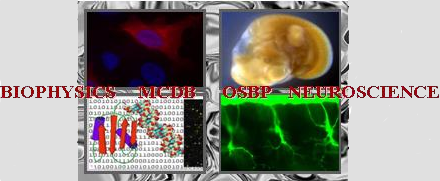Poster abstracts
Poster number 86 submitted by Patrick Heilman
HSPB1-Mediated Non-Cell Autonomous Neuroprotection of Motor Neurons is Disrupted by Mutations that Result in Hereditary Neuropathy
Patrick L. Heilman (The Ohio State Biochemistry Program), Dr. SungWon Song, Dr. Carlos Miranda (The Institute for Gene Therapy), Dr. Kathrin Meyer (The Institute for Gene Therapy), Dr. Brian K. Kaspar (The Institute for Gene Therapy), Dr. Stephen J. Kolb (Department of Biological Chemistry and Pharmacology, Department of Neurology)
Abstract:
Objective: To study the neuroprotective effects of wild type and disease associated mutant HSPB1 in an established in vitro ALS co-culture model system.
Methods: HSPB1 lenti-viral constructs were transduced into wild type and ALS murine NPC-derived astrocytes. Astrocytes were then co-cultured with murine motor neurons in vitro, with motor neuron survival being measured daily.
Results: Our results show that HSPB1 overexpression in SOD1-G93A astrocytes promotes motor neuron survival in vitro. By day 6, HSPB1 expression increased motor neuron survival by 10-fold compared to astrocytes expressing SOD1-G93A alone. Overexpression of phosphomimetic HSPB1 (HSPB1-TriD) resulted in a 40% increase in motor neuron survival. Overexpression of mutant HSPB1 resulted in a reduction of neuroprotection (HSPB1-R136W) or in a complete loss of neuroprotection (HSPB1-G84R). siRNA-mediated knockdown of endogenous HSPB1 had had no effect on motor neuron survival.
Conclusion: We conclude that non-cell autonomous overexpression of HSPB1 protects motor neurons from SOD1-mediated toxicity in vitro and this protection may be mediated by HSPB1 phosphorylation. Further, mutations in HSPB1 associated with late on-set distal hereditary motor neuropathy fail to protect motor neurons in this model system. Finally, we show that astrocyte-specific expression of these HSPB1 mutants are themselves toxic to motor neurons.
Keywords: HSPB1, Motor Neuron Disease, Molecular Chaperone
